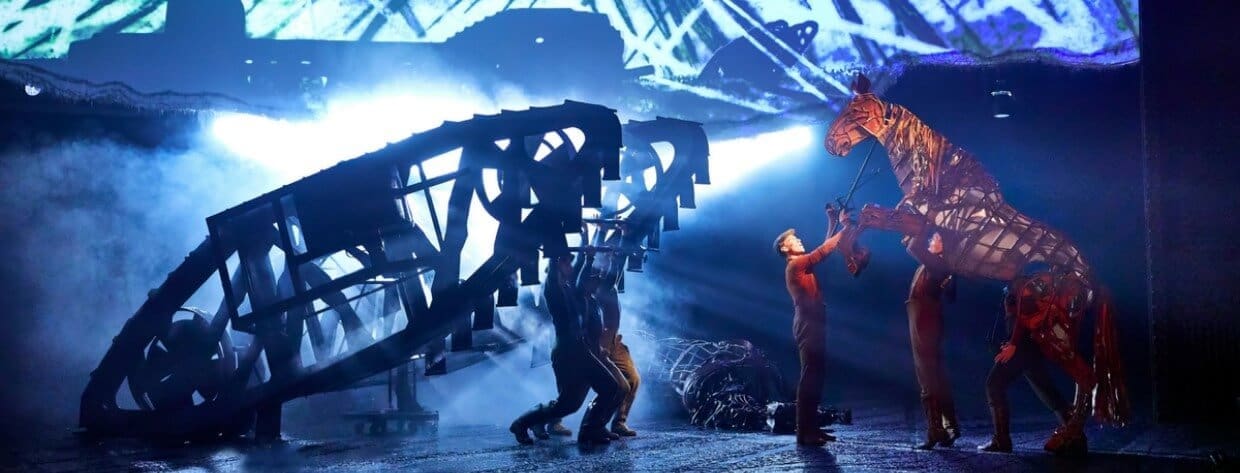The Importance of Staging in Theatre
The Importance of Staging in Theatre
Theatre is a place where stories come to life, emotions are vividly expressed, and audiences are transported to different worlds. At the heart of this transformative experience lies the art of staging, a crucial element that can make or break a performance. Event staging companies play an integral role in this process, ensuring that every aspect of the stage setting enhances the narrative and engages the audience.
The Essence of Staging in Theatre
Staging in theatre encompasses all the elements that transform a script into a living, breathing performance. This includes the design and arrangement of the set, the placement of props, the use of lighting and sound, and the choreography of the actors’ movements. Effective staging not only supports the story but also adds layers of meaning, creating an immersive experience for the audience.
- Enhancing the Narrative
A well-designed stage can visually convey the essence of the story, setting the tone and mood before a single line is spoken. Event staging companies work closely with directors and designers to create sets that reflect the themes, time periods, and locations of the play. For instance, a minimalist set with stark lighting might be used to underscore the bleakness of a dystopian narrative, while a lush, detailed set can evoke the opulence of a historical drama. - Creating Atmosphere and Mood
Lighting and sound are pivotal in creating the right atmosphere. Event staging companies use lights to highlight emotions, suggest the passage of time, or symbolise thematic elements. Similarly, sound design can amplify tension, foreshadow events, or provide aural clues about the setting. By orchestrating these elements, staging professionals ensure that the audience is emotionally engaged and fully immersed in the world of the play. - Facilitating Actor Performances
Staging is not just about the visual and auditory elements; it also involves the strategic use of space to facilitate actors’ movements and interactions. A thoughtfully designed stage allows actors to move fluidly, enhancing their performances and ensuring that their actions are visible and impactful. Event staging companies meticulously plan the layout of the stage to optimise sightlines and acoustics, making sure that every audience member has an unobstructed view and can hear every word clearly.
The Role of Event Staging Companies
Event staging companies bring a wealth of expertise and resources to theatrical productions. They offer a comprehensive range of services, from initial concept development to the final execution of the stage design. Here’s how these companies contribute to the success of theatre productions:
Concept Development and Design
Event staging companies collaborate with directors and production teams to develop the concept and design of the stage. They provide creative input and technical expertise to translate the director’s vision into a practical and aesthetically pleasing set. This involves creating detailed plans, 3D models, and prototypes to ensure that every element is meticulously planned and executed.
Technical Expertise and Innovation
Modern theatre productions often rely on sophisticated technology to create dynamic and engaging stage environments. Event staging companies are at the forefront of these innovations, utilising advanced lighting systems, projection mapping, and automated rigging to create stunning visual effects. Their technical expertise ensures that these complex systems are seamlessly integrated into the production, enhancing the overall impact of the performance.
Project Management and Logistics
Staging a theatrical production is a complex logistical undertaking that requires careful planning and coordination. Event staging companies manage all aspects of the staging process, from sourcing materials and constructing sets to coordinating rehearsals and managing on-site installations. Their project management skills ensure that the staging is completed on time, within budget, and to the highest standards of quality.
Adaptability and Problem-Solving
Live theatre is inherently unpredictable, and staging companies must be adaptable and resourceful to handle unexpected challenges. Whether it’s adjusting the set design to accommodate last-minute changes, troubleshooting technical issues, or ensuring the safety of the performers, event staging companies are adept at finding creative solutions to any problems that arise.
Case Studies: Impactful Staging in Theatre
To illustrate the importance of staging in theatre, let’s look at a few notable examples where Scott Fleary played a crucial role:
Black Sabbath – The Ballet
“Black Sabbath – The Ballet” showcases innovative staging that merges art and technology to stunning effect. Designed by Alexandre Arrechea, the centrepiece is a chrome demon with an 8-foot wingspan perched on an upturned car. This set piece, created with CNC and 3D printed components on a steel armature, brings a fantastical, gothic aesthetic to life. The collaboration between Scott Fleary and Windsor Workshop resulted in a visually striking and thematically cohesive staging that amplifies the ballet’s dark, atmospheric narrative.
Wizard of Oz – The Icon of the Sea
The theatrical production “Wizard of Oz – The Icon of the Sea” demonstrates how staging can transform a familiar story into a novel spectacle. Scott Fleary designed and constructed elaborate set pieces that capture the magic of Oz, integrating advanced lighting and sound systems to enhance the audience’s immersion. The design includes dynamic elements like rotating stages and vibrant, whimsical backdrops that reflect the fantastical journey of Dorothy and her friends. This staging not only supports the narrative but also elevates the visual and emotional impact of the performance.
War Horse
“War Horse” is another example of how innovative staging can elevate a theatrical production. The use of life-sized puppets to represent horses, crafted by skilled event staging companies, brings a level of realism and emotional depth to the story. The staging allows the audience to suspend disbelief and become fully invested in the characters and their journey. The careful choreography of the puppeteers, combined with evocative lighting and sound design, creates a powerful and immersive experience.
Still Have Questions?
Our friendly team is here to help you out.

